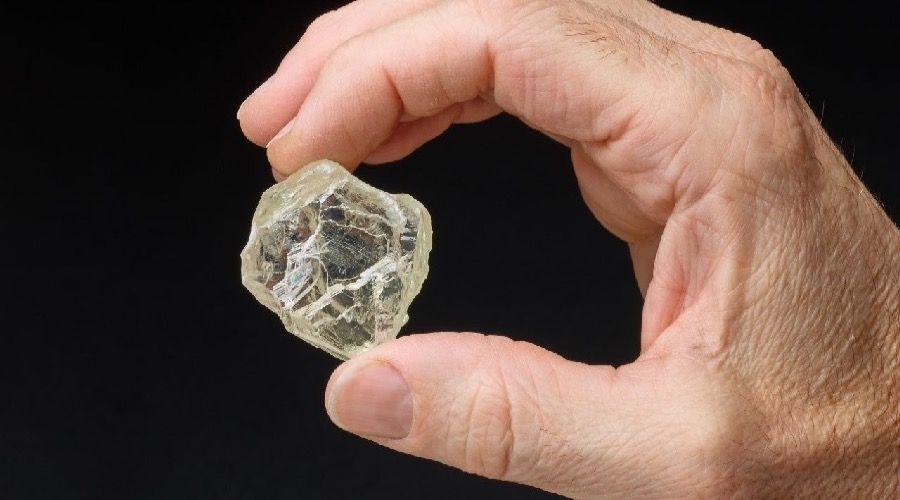
New research has identified buried kimberlite by testing the DNA of microbes in the surface soil.
In a paper published in the journal Communications Earth and Environment, the scientists behind the study explain that these “biological fingerprints” can reveal which minerals are buried tens of meters below the earth’s surface without having to drill.
In their view, this is the first time modern DNA sequencing of microbial communities is used in the search for buried minerals.
According to the researchers, when ore interacts with soil, it changes the communities of microbes on the ground. The researchers tested this in the lab, introducing kimberlite to soil microbes and watching how they changed in number and species.
“We took those changed communities of microbes as indicators for the presence of ore materials, or biological fingerprints in the soil of buried mineral deposits,” Bianca Iulianella Phillips, co-author of the study and a doctoral candidate at the University of British Columbia’s department of Earth, Ocean and Atmospheric Sciences said in a media statement.
Using these “indicator” microbes and their DNA sequences, the team tested the surface soil at an exploration site in Canada’s Northwest Territories where kimberlite had previously been confirmed through drilling. They found 59 of the 65 indicators were present in the soil, with 19 present in high numbers directly above the buried ore. They also identified new indicator microbes to add to their set.
Using this set, they tested the surface soil at a second site in the Northwest Territories where they suspected kimberlite was present and precisely located the topological outline and location of kimberlite buried tens of meters beneath the surface. This showed that indicators from one site could predict the location at another site.
Iulianella Phillips and her co-authors believe that, in the future, exploration teams could build up a database of indicator species and test an unknown site to find out if kimberlite deposits are buried beneath the soil.
The researchers also compared their technique with geochemical analysis and noticed that the microbes were more precise when it came to identifying the location of buried ore.
“Microbes are better geochemists than us, and there are thousands of them,” Rachel Simister, lead author of the paper, said. “You might run out of elements to sample, but you’ll never run out of microbes.”
For Simister, the technique could catalyze the discovery of new kimberlite deposits and has potential application across other metal deposits. The team’s ongoing research shows similar results for identifying porphyry copper deposits.
“This is exciting because it’s part of a growing recognition of the potential for using microbes at every stage of mining, from finding the minerals to processing them to returning sites to their natural states,” Sean Crowe, senior author of the study, said.
“Currently, microbial DNA sequencing requires specific expertise and is comparable in cost to other mineral exploration techniques, but this could change with industry adoption.”